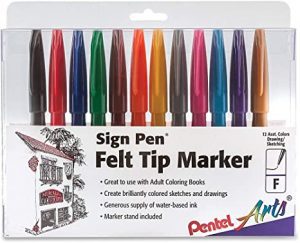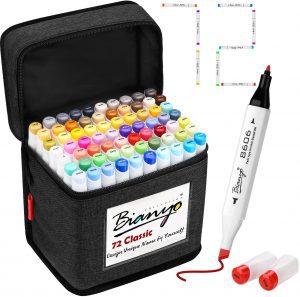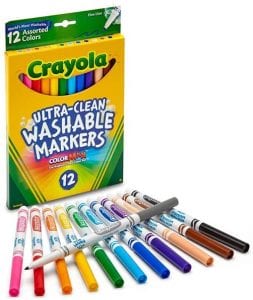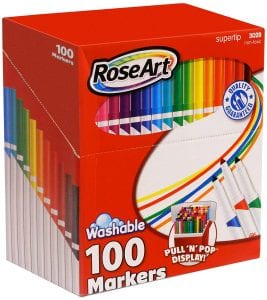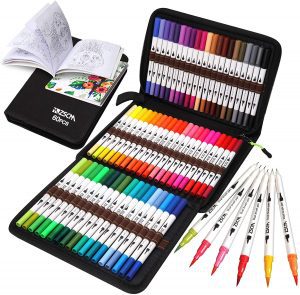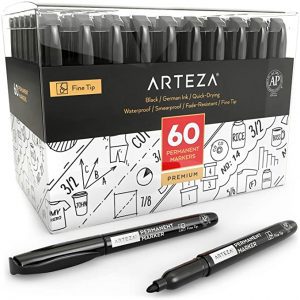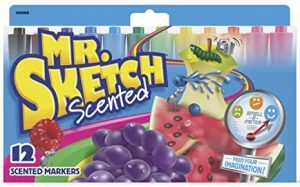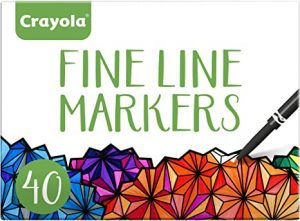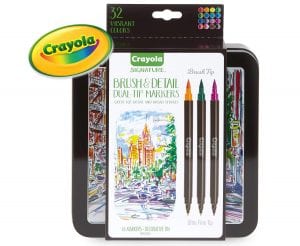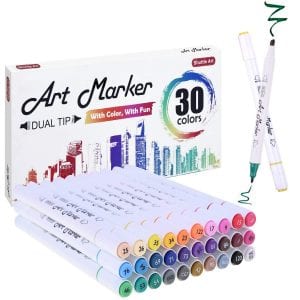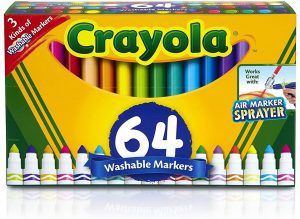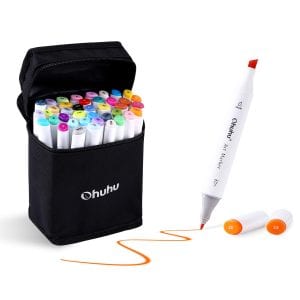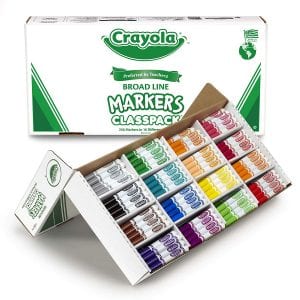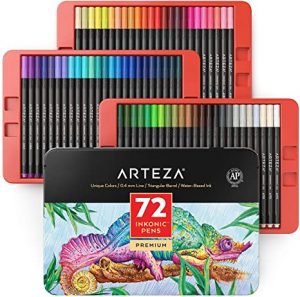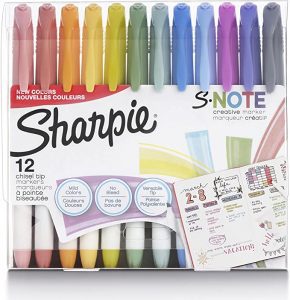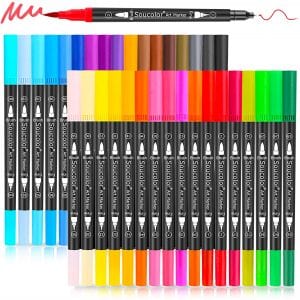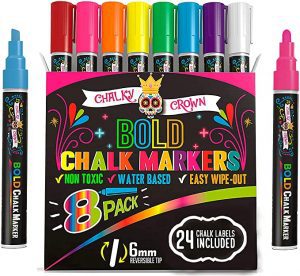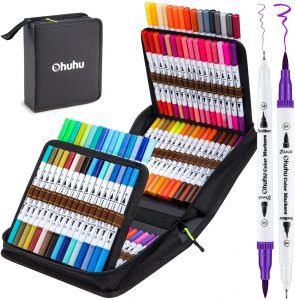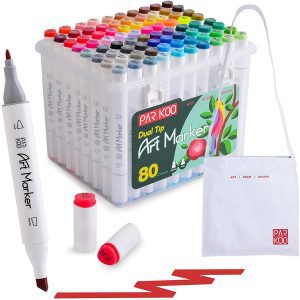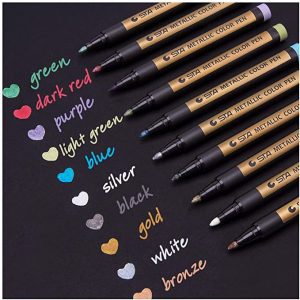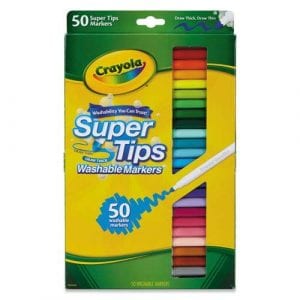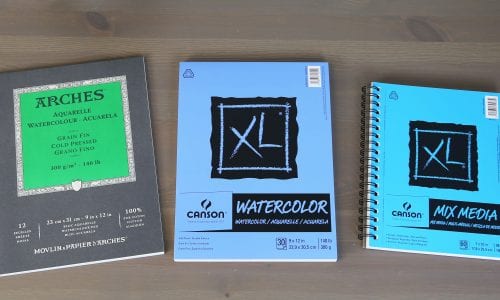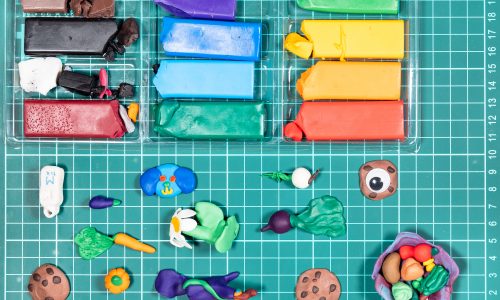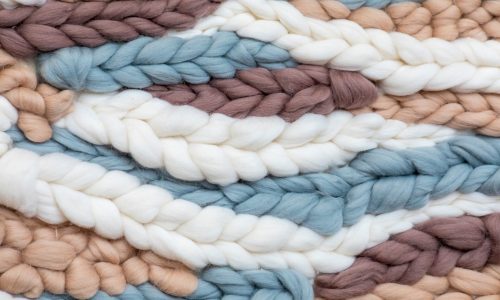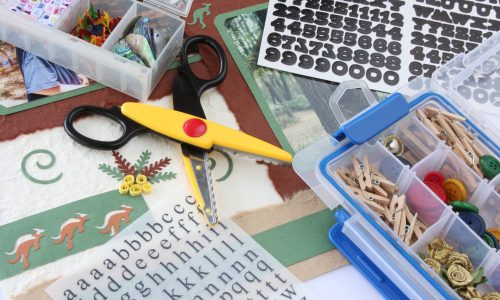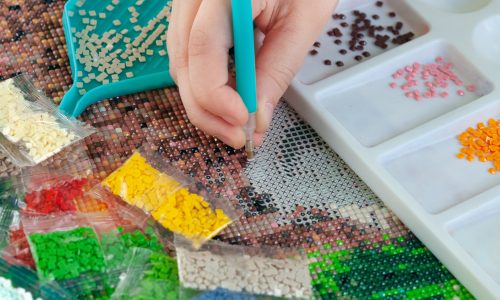The Best Markers for Art Projects
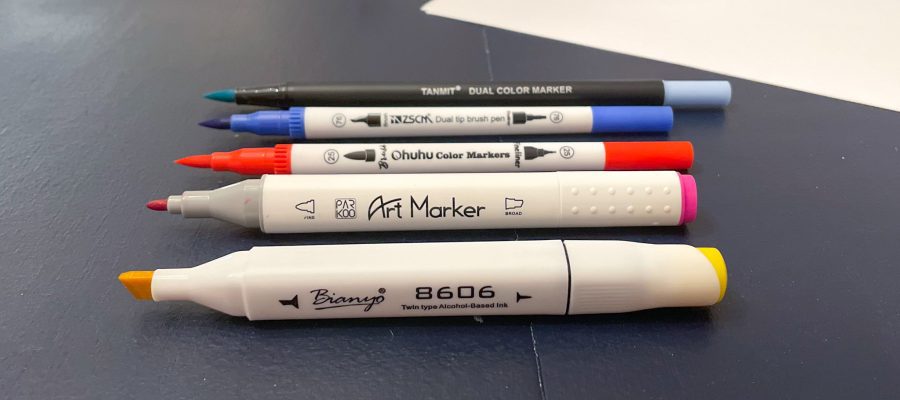
Our Review Process
Don't Waste Your Money is focused on helping you make the best purchasing decision. Our team of experts spends hundreds of hours analyzing, testing, and researching products so you don't have to. Learn more.
Our Picks For The Top Markers
- 1. Pentel Fiber-Tipped Water-Based Markers, 12-Count
- 2. Bianyo Classic Low Odor Dual Tip Marker Set, 72-Piece
- 3. Crayola Ultra-Clean School Markers, 12-Count
- 4. RoseArt SuperTip Washable Markers, 100 ct
- 5. ZSCM Fine & Brush Tip Marker Set, 60-Piece
- 6. Arteza Chisel Tip Permanent Markers, 36-Count
- 7. Mr. Sketch Certified Scented Markers, 12-Count
- 8. Crayola Permanent Fine Line Markers, 40-Count
- 9. Crayola Dual-Tip Ultra Fine Brush Markers, 16-Count
- 10. Shuttle Art Alcohol Marker Pens, 30-Count
- 11. Crayola Broad Line Washable Marker Set, 64-Piece
- 12. Ohuhu Dual Tips Permanent Markers, 40-Count
- 13. Crayola Water Based Classic Markers, 256-Count
- 14. ARTEZA Inkonic Easy Grip Markers, 72-Count
- 15. Sharpie No Bleed Note-Taking Markers, 12-Count
- 16. Soucolor Quick Dry Dual Tip Markers, 34-Count
- 17. Chalky Crown Non-Toxic Children’s Chalk Markers, 8-Count
- 18. Ohuhu Water Based Dual Tip Marker Set, 100-Piece
- 19. ParKoo Alcohol Based Dual Tip Marker Set, 80-Piece
- 20. Dyvicl Acid-Free Odorless Markers, 10-Count
- 21. Crayola Kid’s Washable Super Tips Markers, 50-Count
Whether you're young or old, these markers are a great option to use with coloring books. The set includes 12 felt-tip markers – each a unique color. The markers feature a snap cap that keeps the ink nice and wet in between coloring sessions. The included stand is also a nice bonus, as it keeps the markers in an upright position.
Great for Kids and AdultsThese markers are water-based, making them ideal for sketching, taking notes and doodling, in addition to coloring.
Each of the 72 markers in this set feature a chisel tip and a fine tip, allowing you to create just about anything. The markers are alcohol-based, making them non-toxic and free of strong odors. Artists will also appreciate that the markers are nice and bright and designed to make drawings, coloring pages and invitations stand out.
Colored Bag IncludedWith this marker set, you'll get a complimentary travel bag in a choice of black, blue, purple, red or gray.
This pack of 12 markers includes all of the classic colors little ones need to create a masterpiece. The tips are fine and work well for both coloring and completing school projects. Parents will appreciate that the markers wash clean from clothes, walls and skin.
Washable PickDesigned for toddlers age 3 and up, these markers are both safe and non-toxic.
Whether you're working on a school project or simply creating art for fun, you won't find a better set of markers than the RoseArt SuperTip Washable Markers, 100 ct. This super-size pack of markers is also one of the most affordable sets on the market. Users will appreciate the bold colors and the versatile tips that can draw both fine and thick li...
Top-Notch And AffordableEach of the markers within this RoseArt SuperTip Washable Markers, 100 ct set are made up of non-toxic chemicals and designed to last a long time.
Buying Guide
Markers are versatile tools that can be used for drawing, labeling and coloring. Which type of marker you choose is dependent on the type of project you’re using it for.
Our Expert Consultant

Artist and art educator
Artist and educator Amy Markham is the creator of Starling, a podcast dedicated to helping artists develop depth in their creative practice. A graduate of Virginia Commonwealth University, Amy has been an art educator since 2001. Today, she teaches middle school art at a school outside of Memphis, Tennessee. Her personal artwork explores myth-making and symbolic understandings. Through her brand, Starling Creative Living, she leads others to explore art production as a method for enriching their life experience.
What to Look For
Begin by examining the marker’s cylinder. Large cylinders are best for tiny hands to hold, while adults would do best with a slim cylinder, as that allows for more control. Others have a triangular cylinder that keeps them from rolling off your kitchen table.
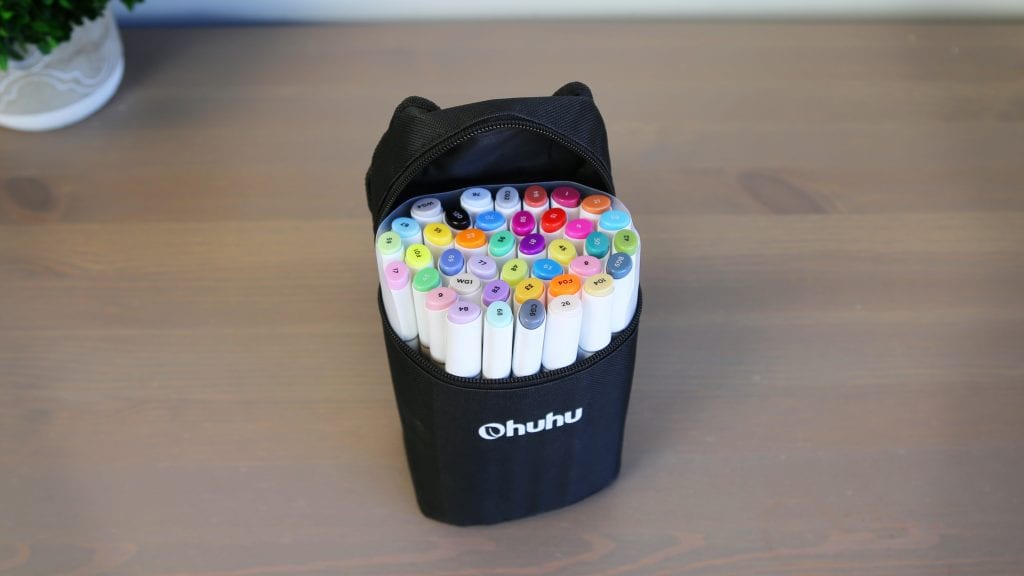
Consider the number of markers needed and how many different shades there are in the set. For example, you may come across a marker set that has 100 markers. However, some of them may be duplicate colors, and others may have shades that are more subtle. This is fine for a classroom of children, but not for someone looking to create a piece of art.
Make sure the chemicals used to make the marker set are non-toxic, especially if you plan on giving them to children. The product will either say “non-toxic” right on the packaging label or contain an AP certification symbol instead.
You’ll also want to make a choice regarding water-based vs. alcohol-based markers.
“Markers like the Crayolas you grew up with are water-based,” says artist and middle school art teacher Amy Markham. “These are inexpensive, but limited in their abilities. Most artists prefer alcohol-based markers because they blend easily, offer bright colors, dry faster and don’t leave streaks.”
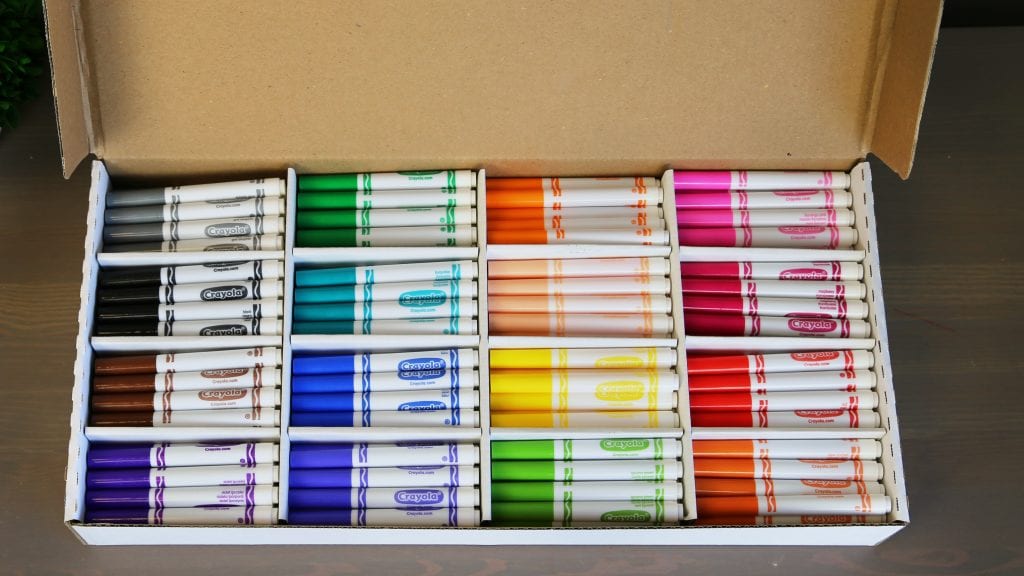
Review the marker’s tip to ensure it will draw the type of line you need. “There are broad tips, brush tips and fine tips with a range of sizes and shape in each of those,” says Markham. “Broad tips are good for laying down large areas of color, where a fine tip will be best for detail. Brush tips are very versatile and can create both thin and thick lines as can chisel tips.”
Check that the ink resists bleeding through the paper you’re drawing on. Some models, for example, are water-based and designed not to bleed.
Look for any extras that the marker set may offer. You may find a package of markers that also comes scented. Another bonus you may come across in your search is a set of markers that comes with its own container. This eliminates the need for you to have to buy a storage bin.
More to Explore
- Always use care when working with permanent markers, as the ink will stain any clothing it comes in contact with. If you do get a smidge of ink on your favorite shirt, spraying the stain with hairspray and blotting the area is your best bet at removing it.
- Should any of the markers in your set dry out, you don’t need to throw them out. You can actually restore them using a few tricks. First, stick the tip of the marker in a bowl of warm water and wait five minutes before removing it. Let it air dry just enough for the water to evaporate, but not the ink. Your marker should then be ready for use. Second, drip two drops of white distilled vinegar over the tip of the marker if the water wasn’t enough. Wait a few minutes before checking that the marker is again ready for use. Third, dipping the marker’s tip in rubbing alcohol works the same as the vinegar tip above.
- One way to recycle old markers is to find a new use for them. For example, you can take the marker’s cap off and use it to cut out small circles from a lump of Playdough, or use a bunch of caps to make a jump rope. You can also take the marker’s tip and set it in a bowl of water to create watercolors that can be used for painting.
- Acetone can be used to remove permanent marker ink that accidentally gets on a glass surface.

